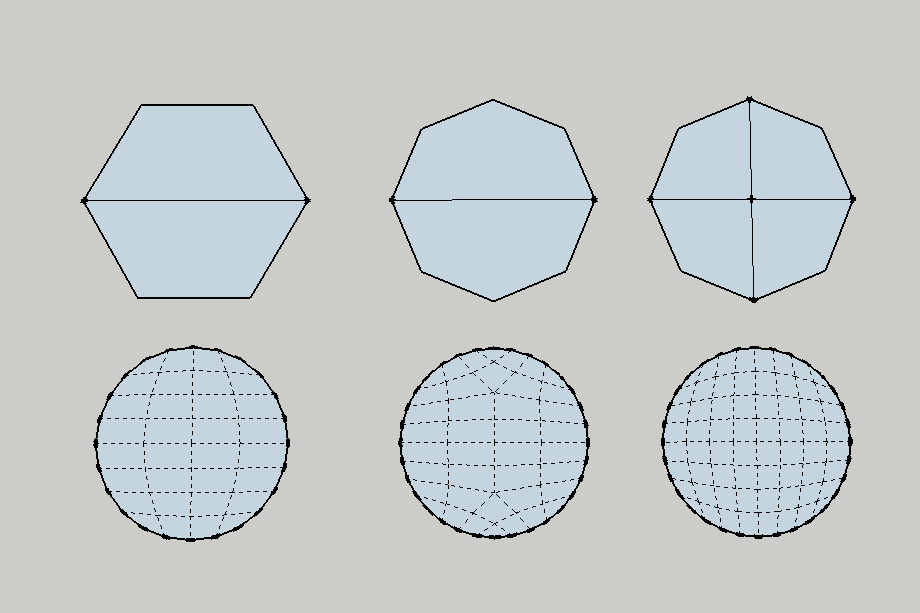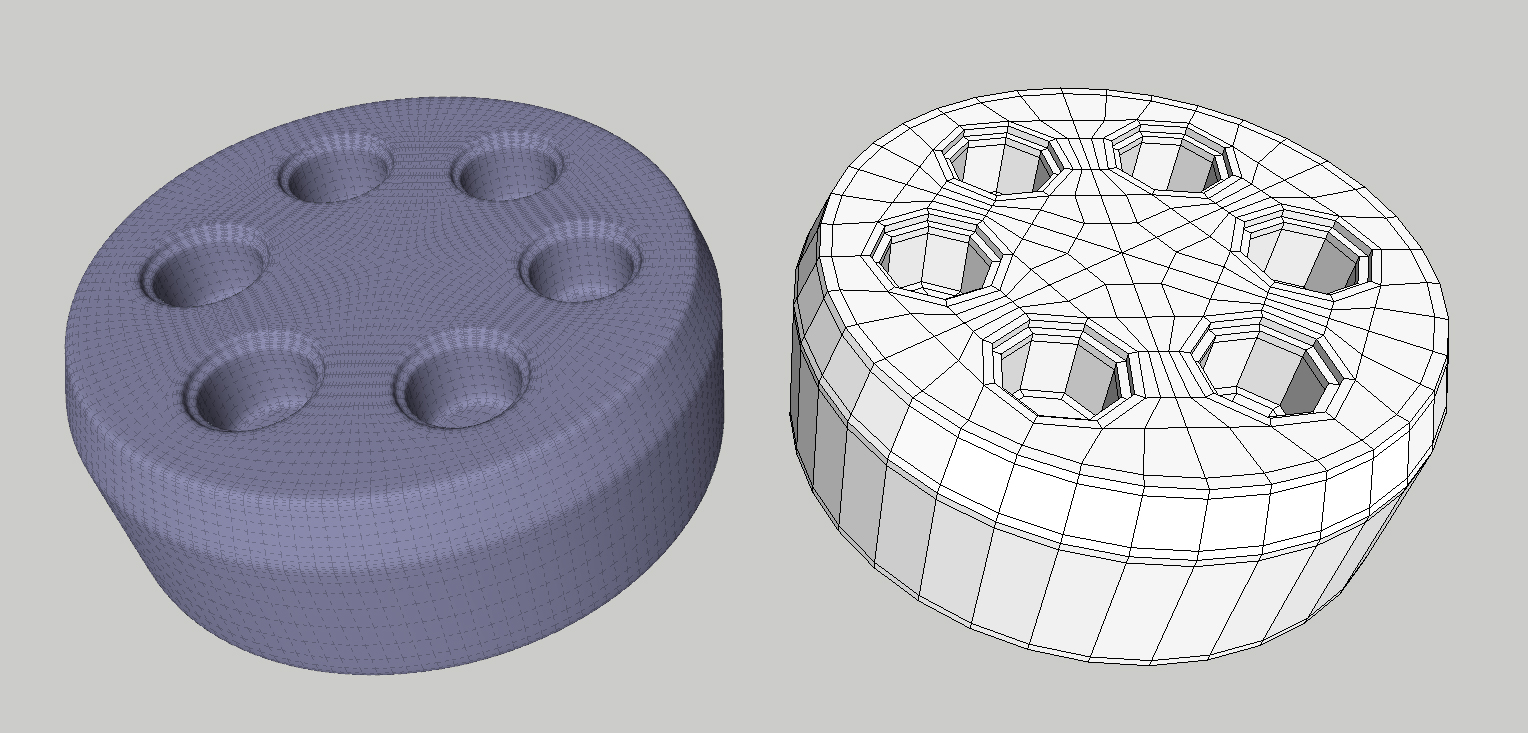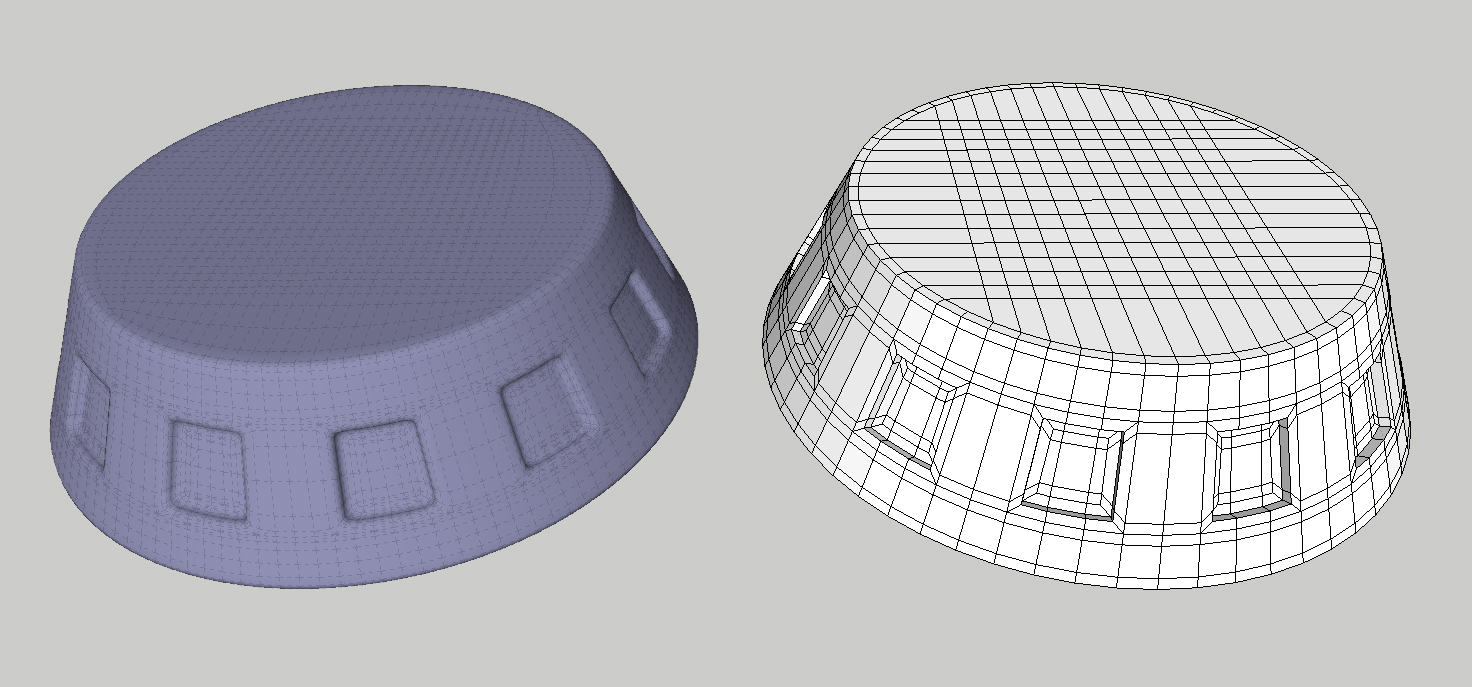Simple Artisan examples collection
-
No problem Cotty.
When I get time, I think I'll try and reproduce some of the examples with SU. It would also be great if we could get people to post requests/advice for SU proxies.
-
@charly2008 said:
I Need your Help. How do I get this quad faces with artisan. I only get this result (see photo below).
You have an internal face where the hoops meet. Also you need to use "split donut" to split the ngons into quads.
-
@olishea said:
You have an internal face where the hoops meet. Also you need to use "split donut" to split the ngons into quads.
Shame you weren't around in December when he needed to know

-
And everyone else!
 His query was answered, but not fully.
His query was answered, but not fully. 
-
Good lad.
Thought I caught u mapping again.
-
Some examples of how loops can affect hard edges in this recess.
Left to right:
Hard edge at base.
Hard edge at wall.
Double hard edge.
No hard edge.

-
Some subtle but important differences there Oli

-
Cerebral pre modeling!

-
@hieru said:
It was certainly a worthwhile exercise as I learnt that n-gons in your proxy can be used to create better topology (see the areas highlighted in red).
Don't you mean lack of n-gons? Those highlighted red are quads.
-
Yes you're right - doh! The proxy modelling and end result make much more sense now.
Normally I'd triangulate odd shaped quads in the same way I'd deal with n-gons. Now I know better.
-
haha yeah, i was confused for a minute! I couldn't understand how n-gons can make anything better.
It doesn't matter how "odd" the quad looks. If it's a quad it's a quad and will perform well. Sometimes you can't avoid triangles. It's too many poles that frustrate me.

-
@olishea said:
It doesn't matter how "odd" the quad looks. If it's a quad it's a quad and will perform well.
Lesson learned

I'll certainly never model proxy circular planes any other way from now on. If this shape is typical, there should be a lot to be learnt from the rest of the examples.
-
Had some time to tackle one of the shapes from the topology reference guide. I've changed some of the modelling to make it easier/faster to achieve in Sketchup.
It was certainly a worthwhile exercise as I learnt that n-gons in your proxy can be used to create better topology (see the areas highlighted in red).

Edit: The red areas are quads rather than n-gons. They are however still very important when it comes to creating better topology.
-
-
Very nice work.
Just a quick note: Try using circles with 6 edges instead of 8. When you intersect a 6 sided circle in half with a line you get two halves of quads, if that makes sense. It doesn't really matter for this model, it's just something I should point out. You would end up with less poly too. The starting circle really determines how successful the subdivision is going to be; if you've tried using a strange amount of edges it becomes difficult to keep quads and the model becomes frustrating.

-
Can you do something about the marked areas? Looks a bit strange to me having those stray edges, even though it does form a quad. The large triangles could possibly be avoided too, don't have time to look though.

-
I was simply copying one of the provided examples, but I'll see if there is a better way of doing it.
-
-
@olishea said:
Try using circles with 6 edges instead of 8. When you intersect a 6 sided circle in half with a line you get two halves of quads, if that makes sense.
Good point....that's a great tip

-
@olishea said:
Can you do something about the marked areas?
Is this any better? It generates much neater topology but the poly count goes up.

Advertisement









